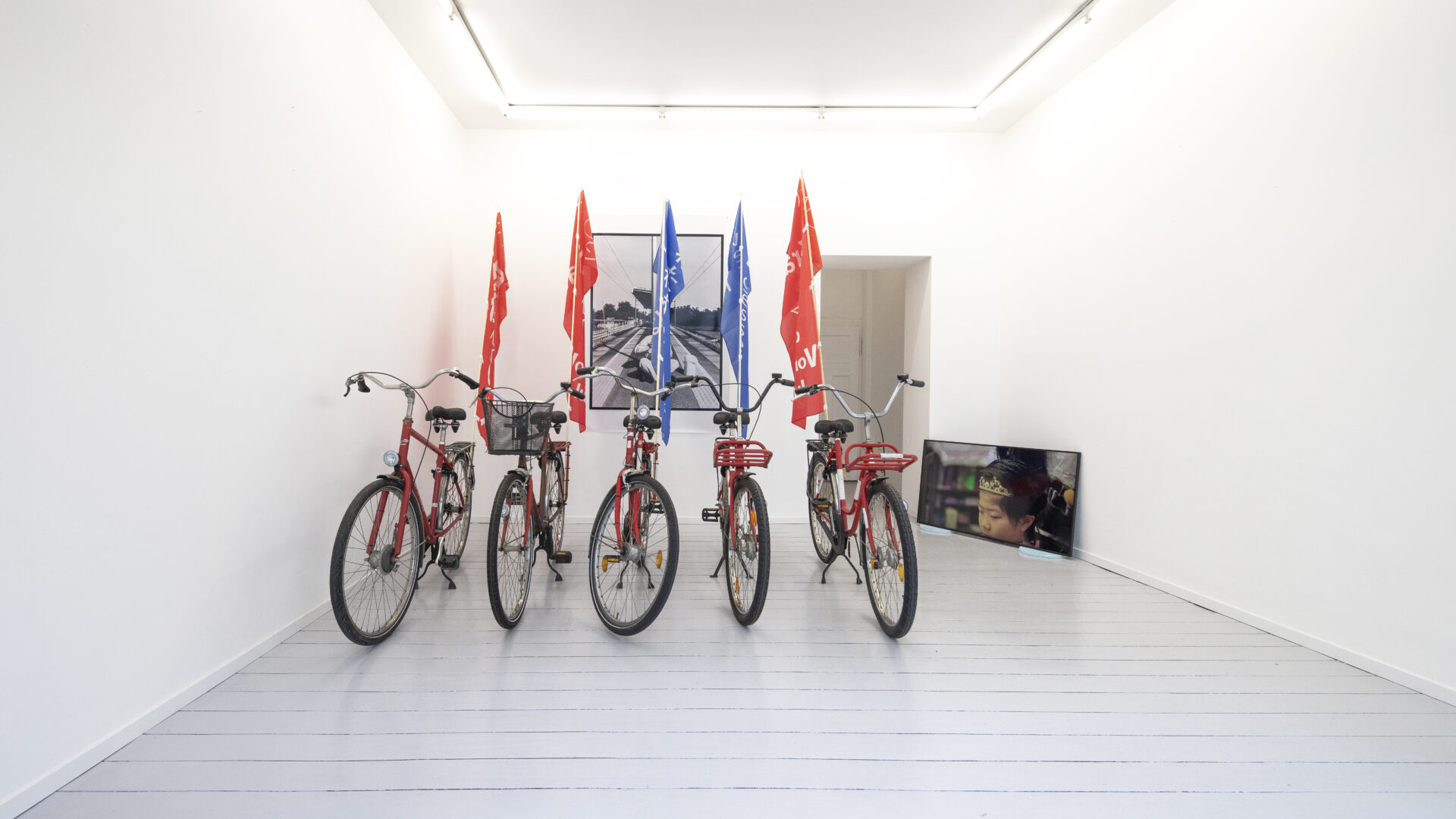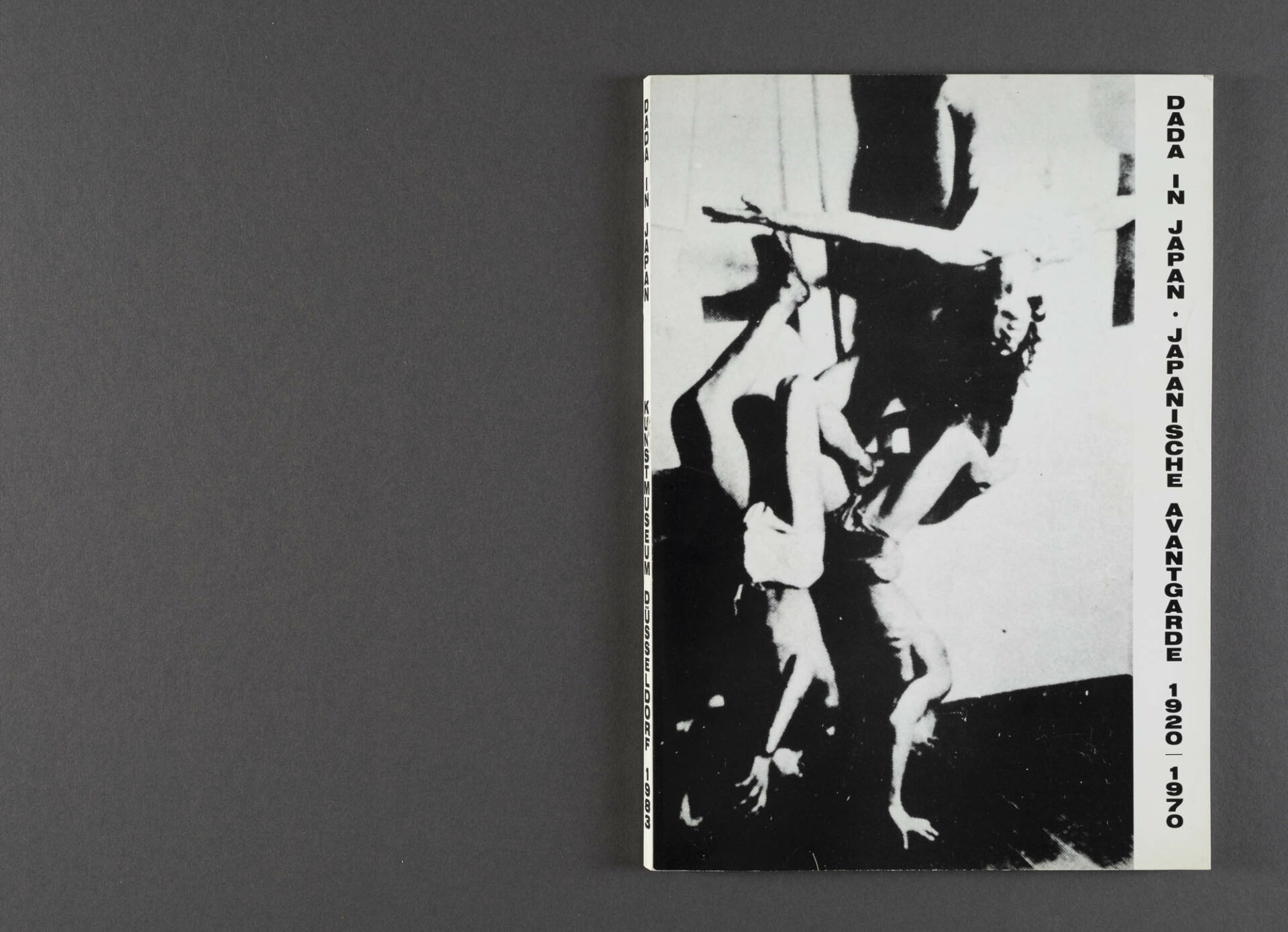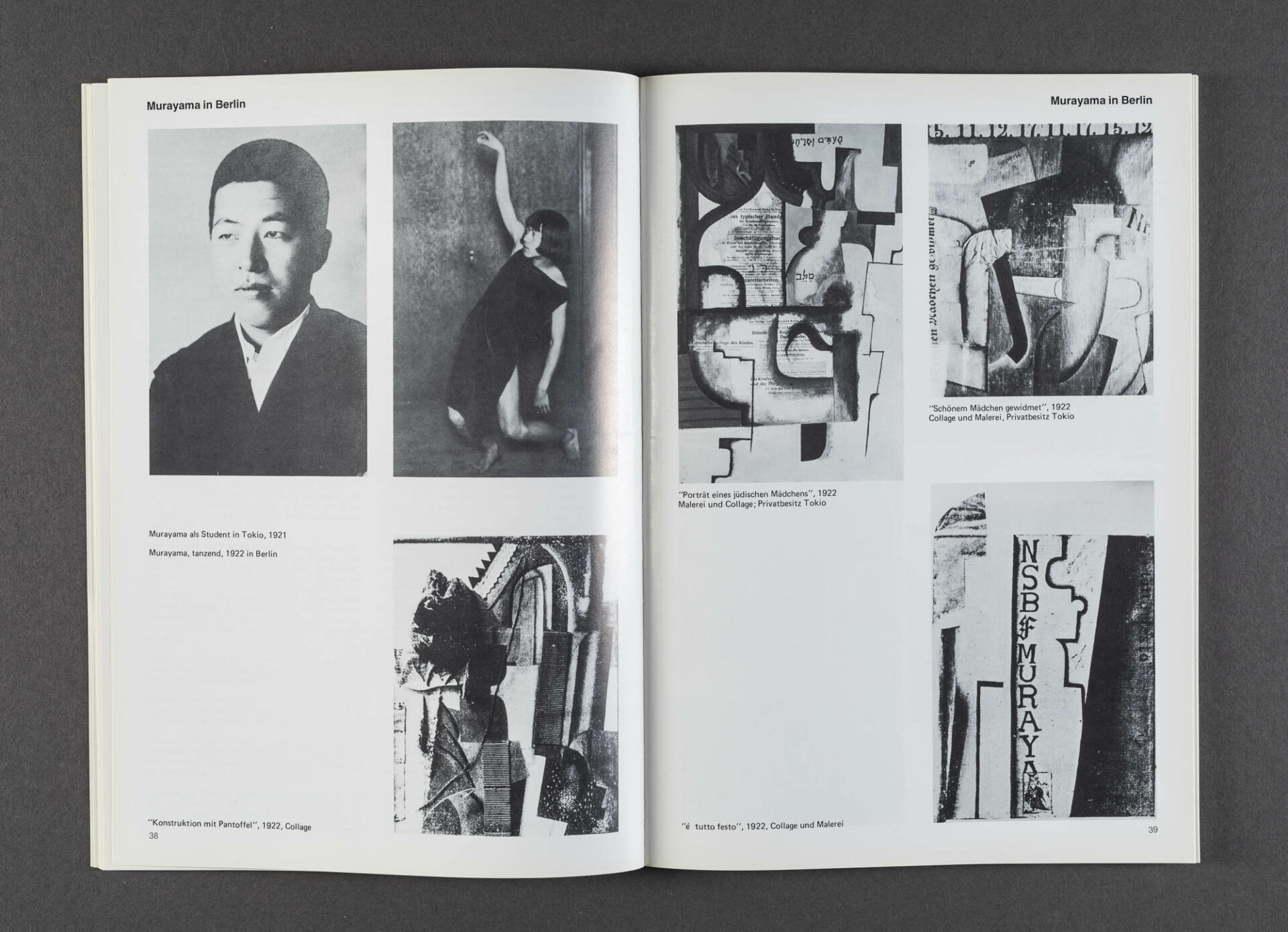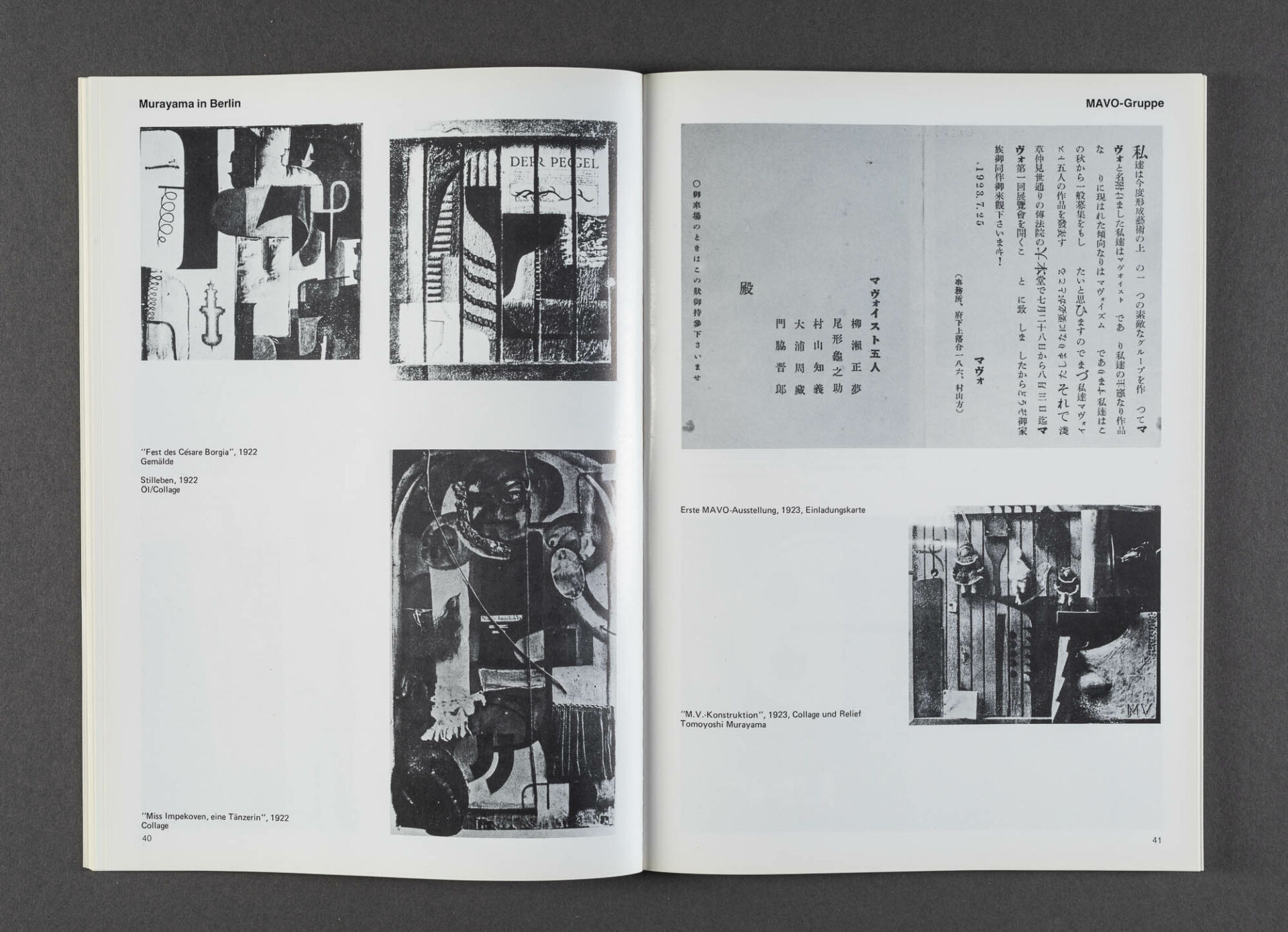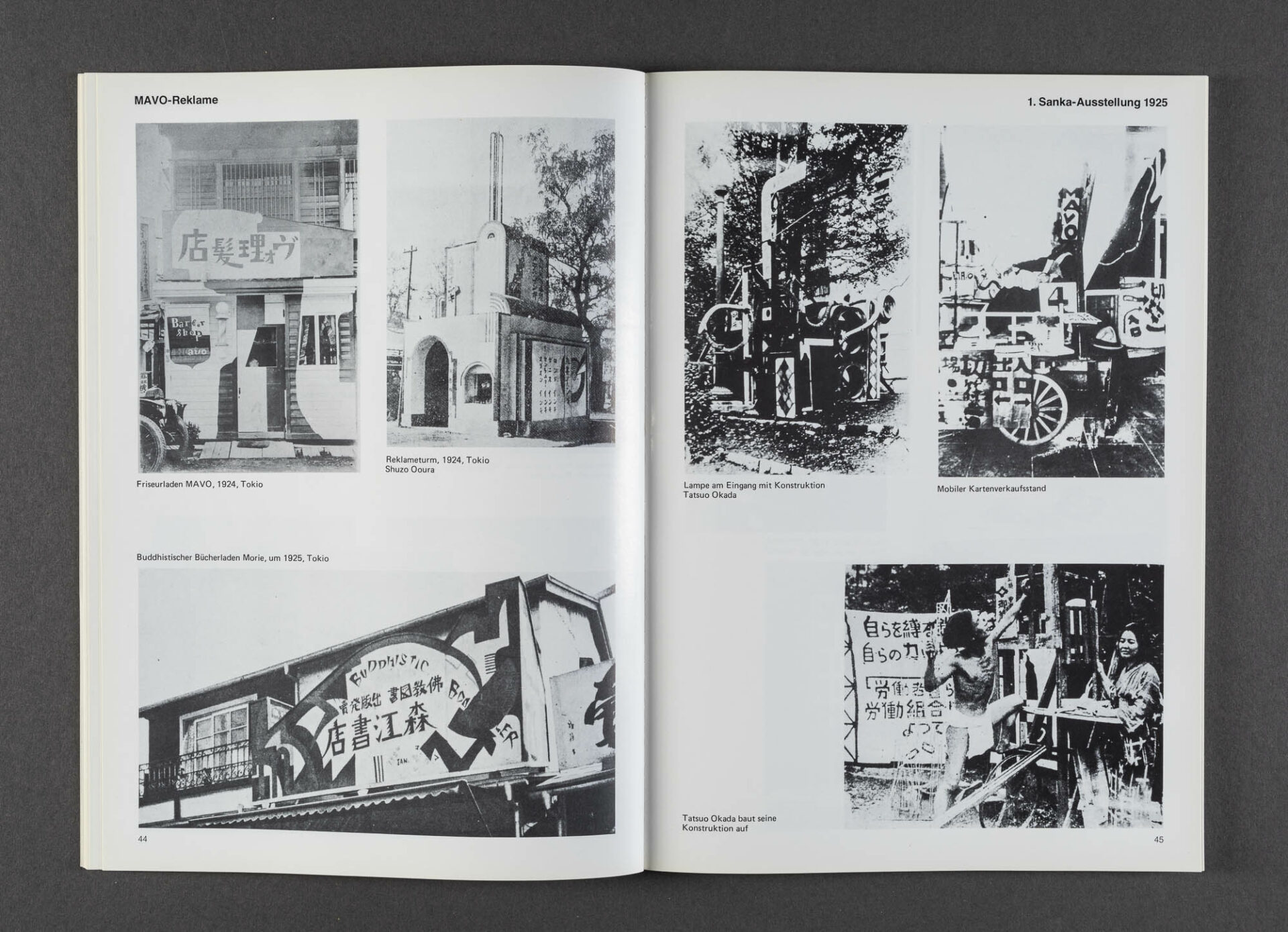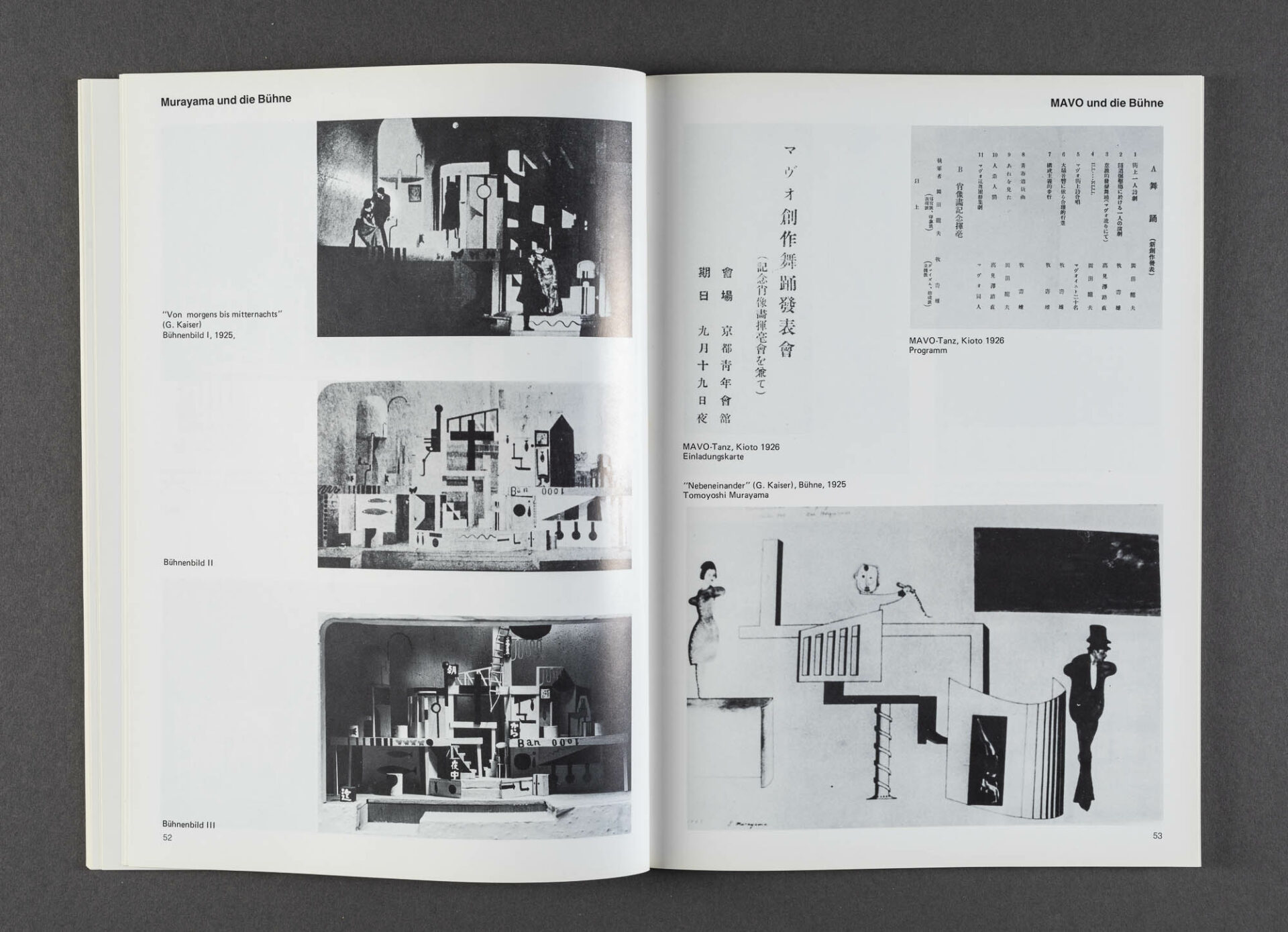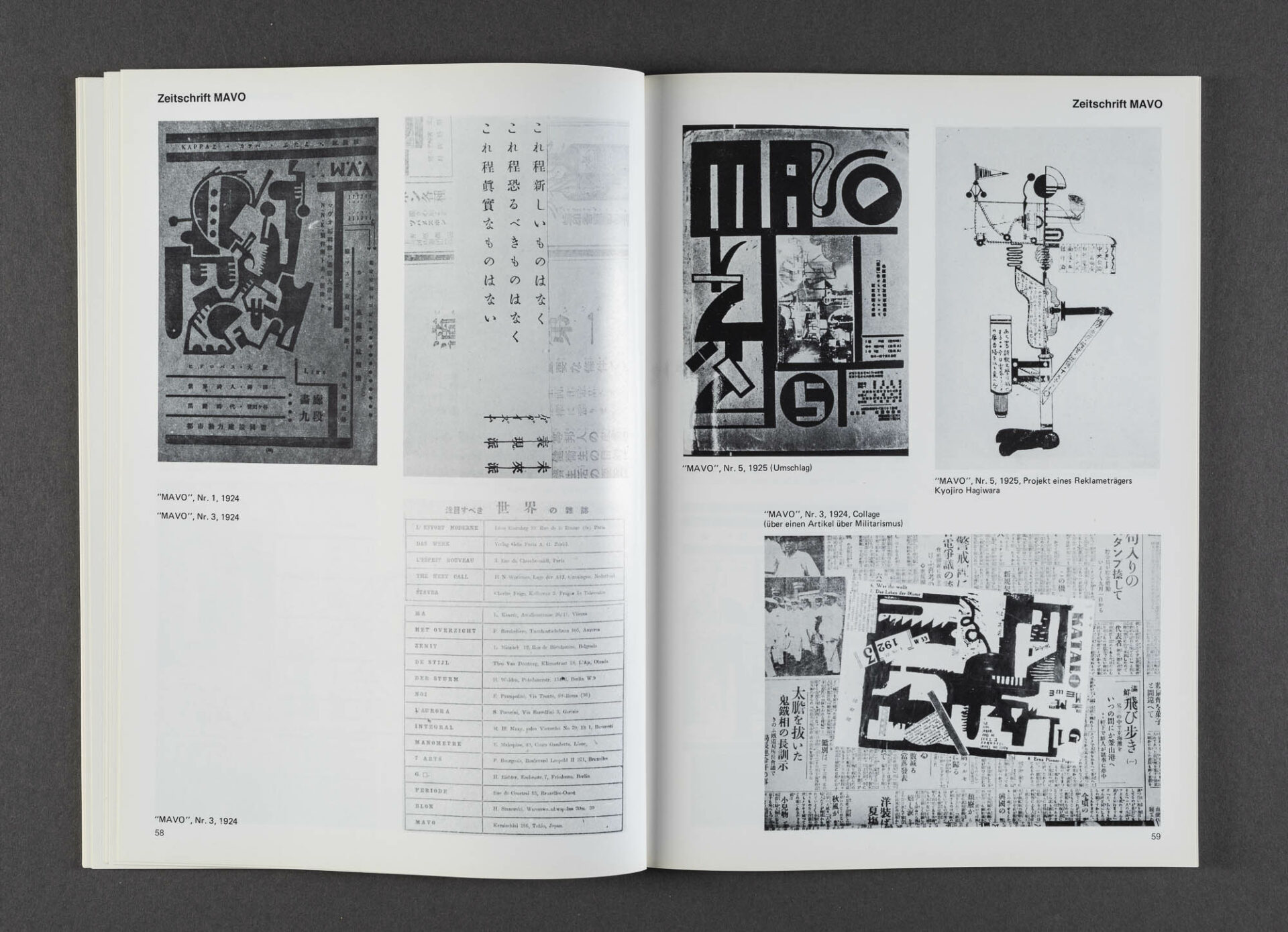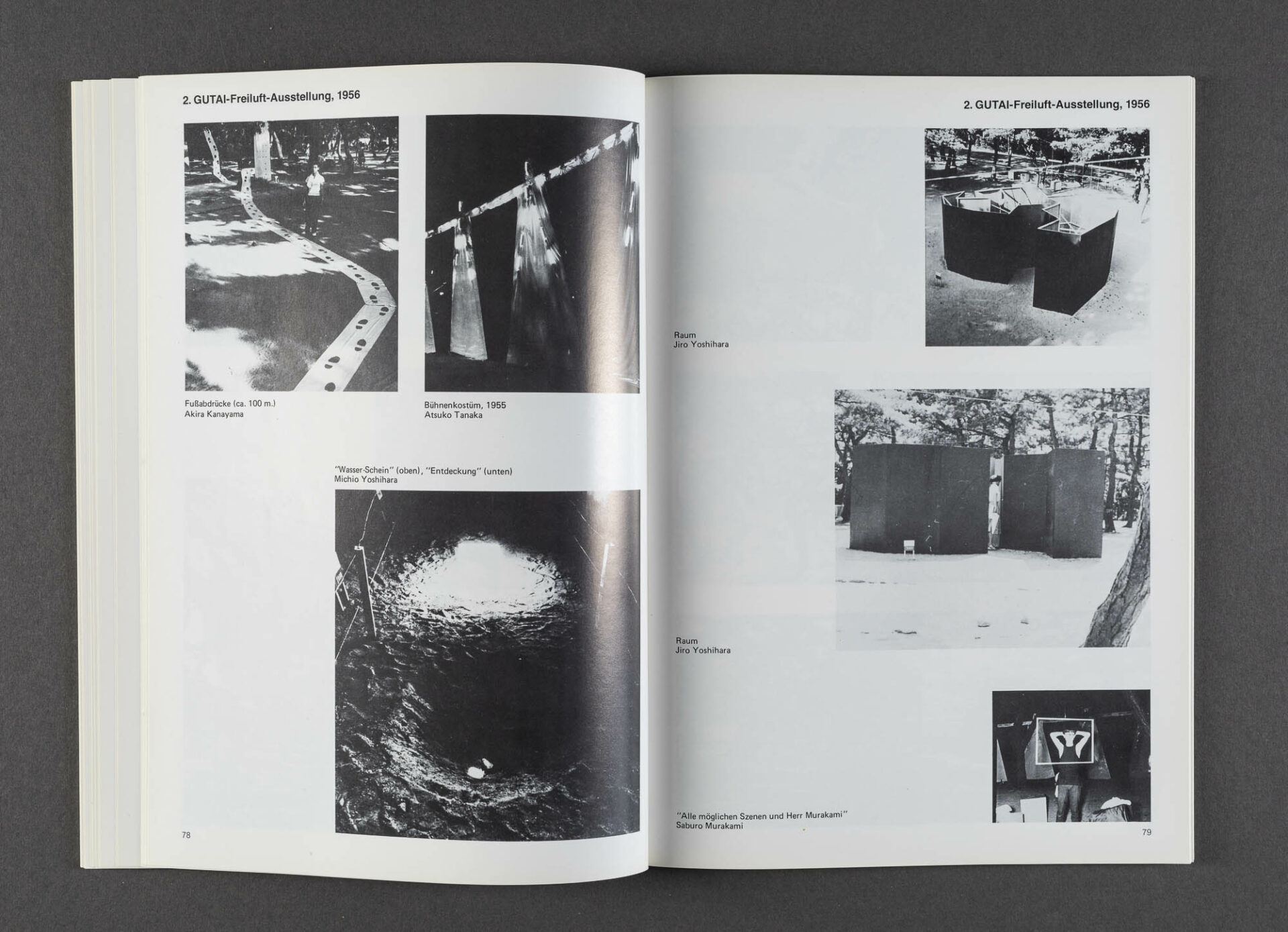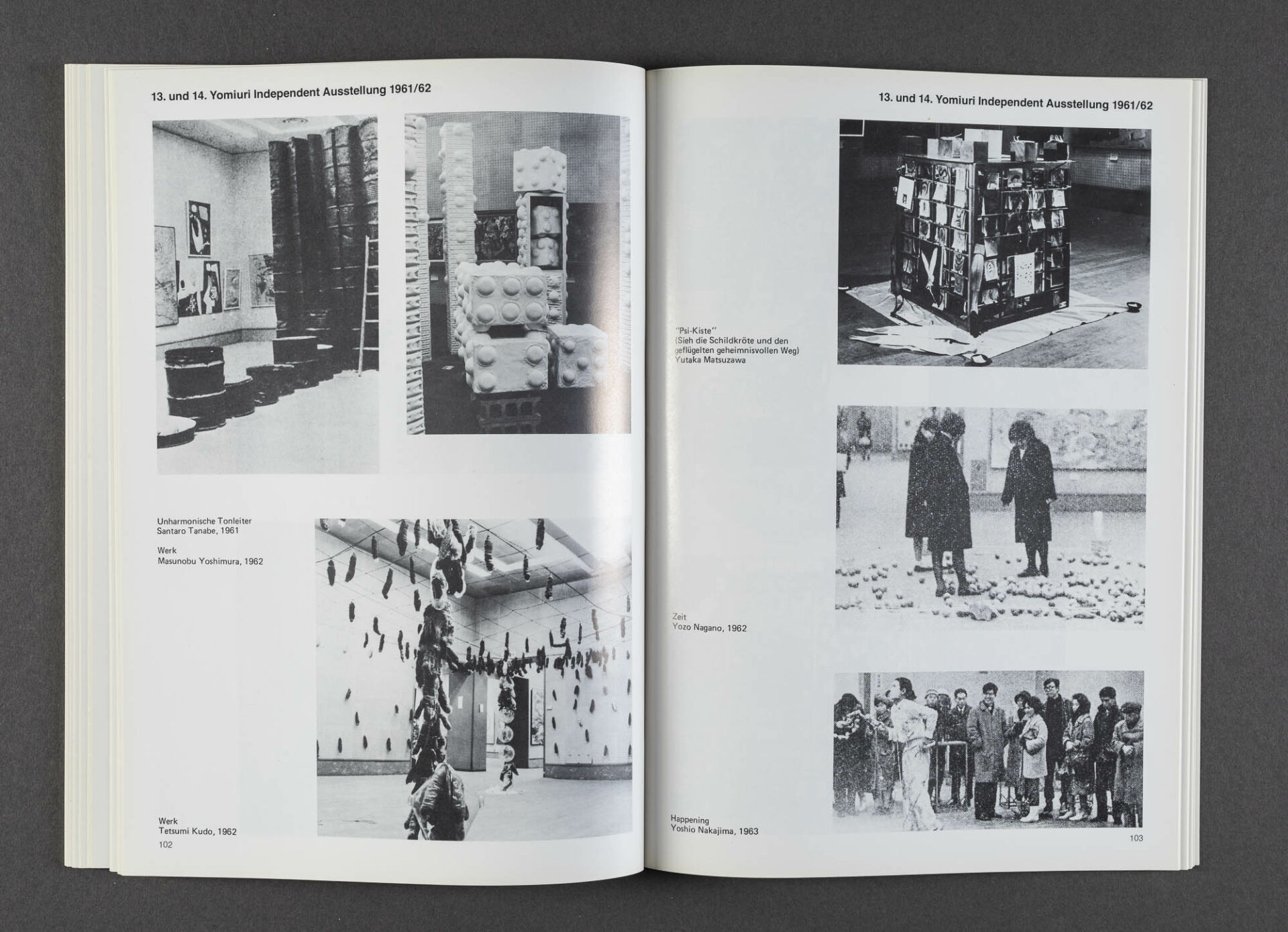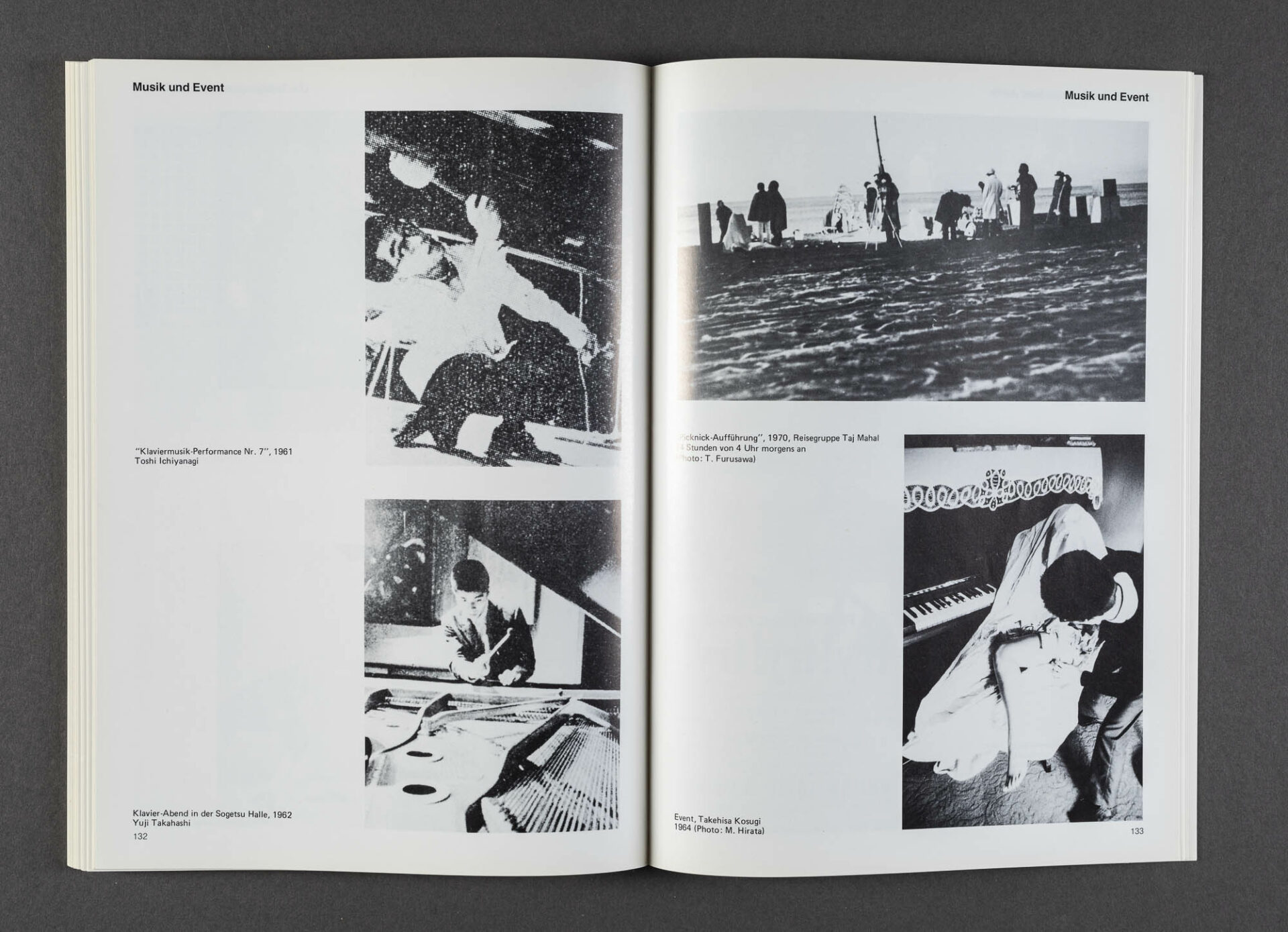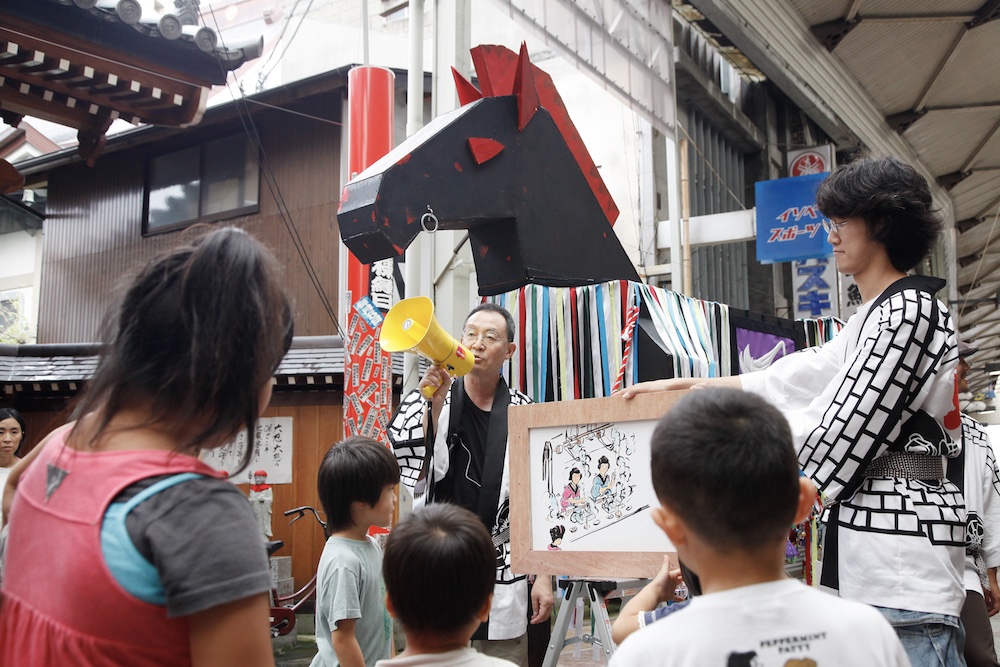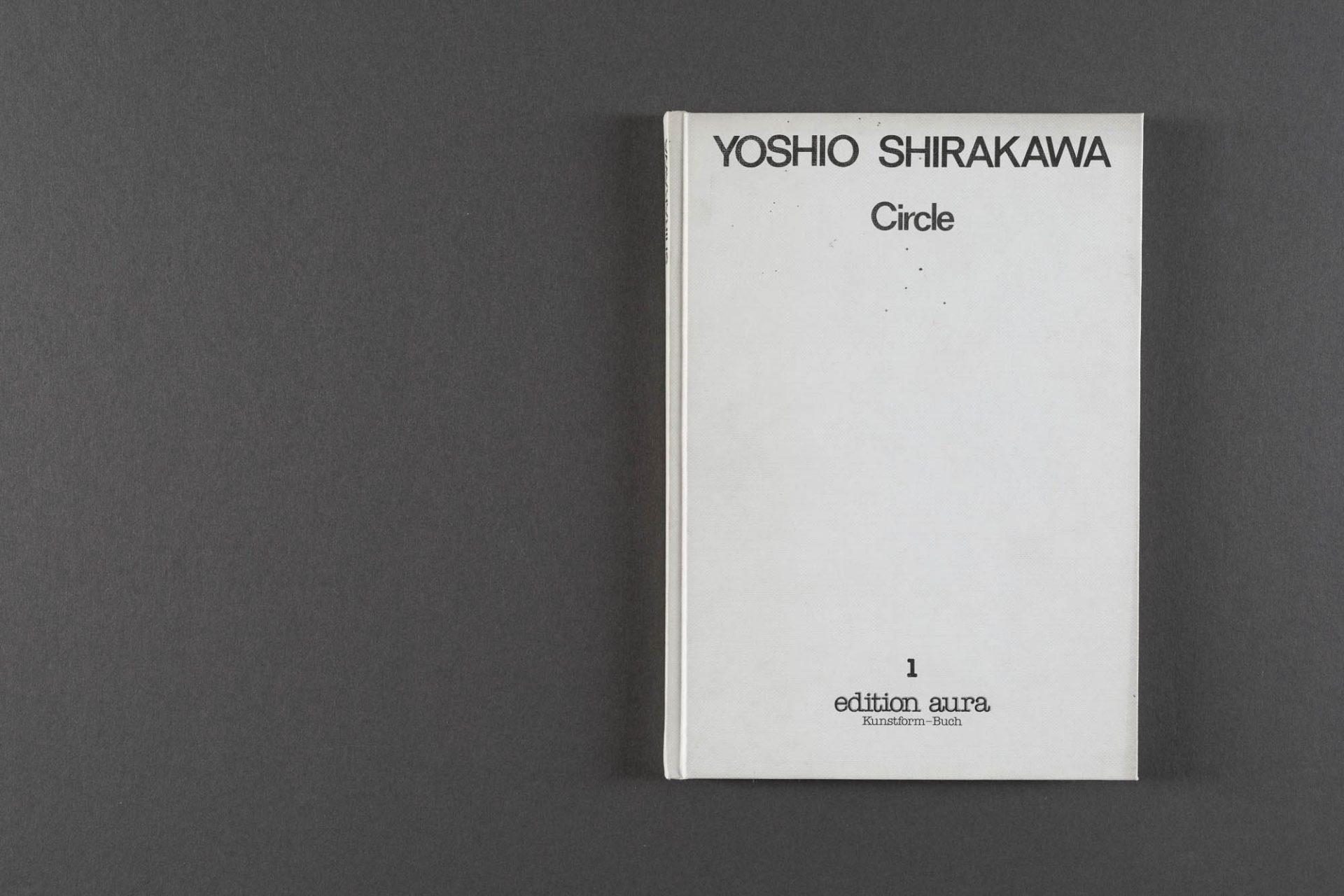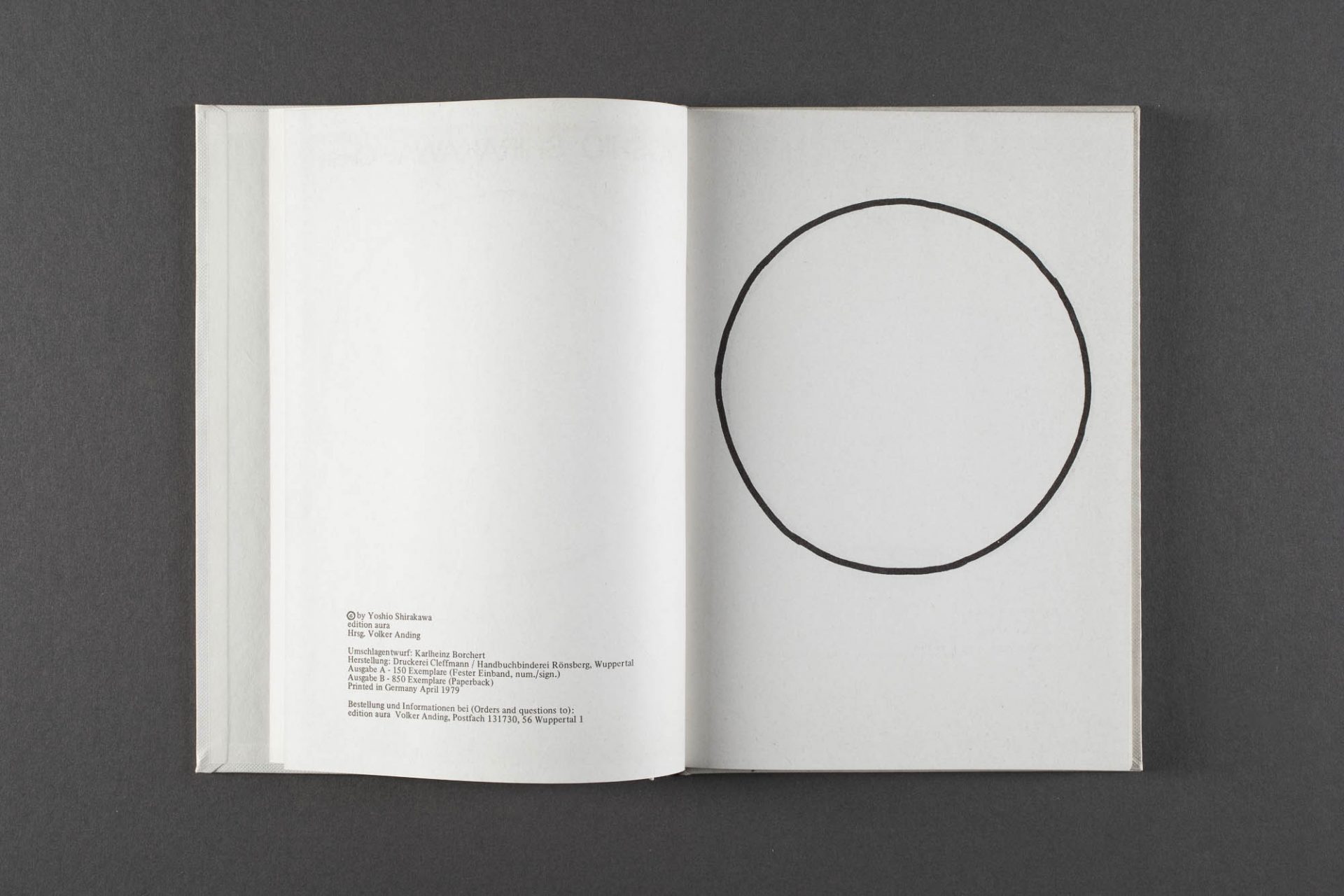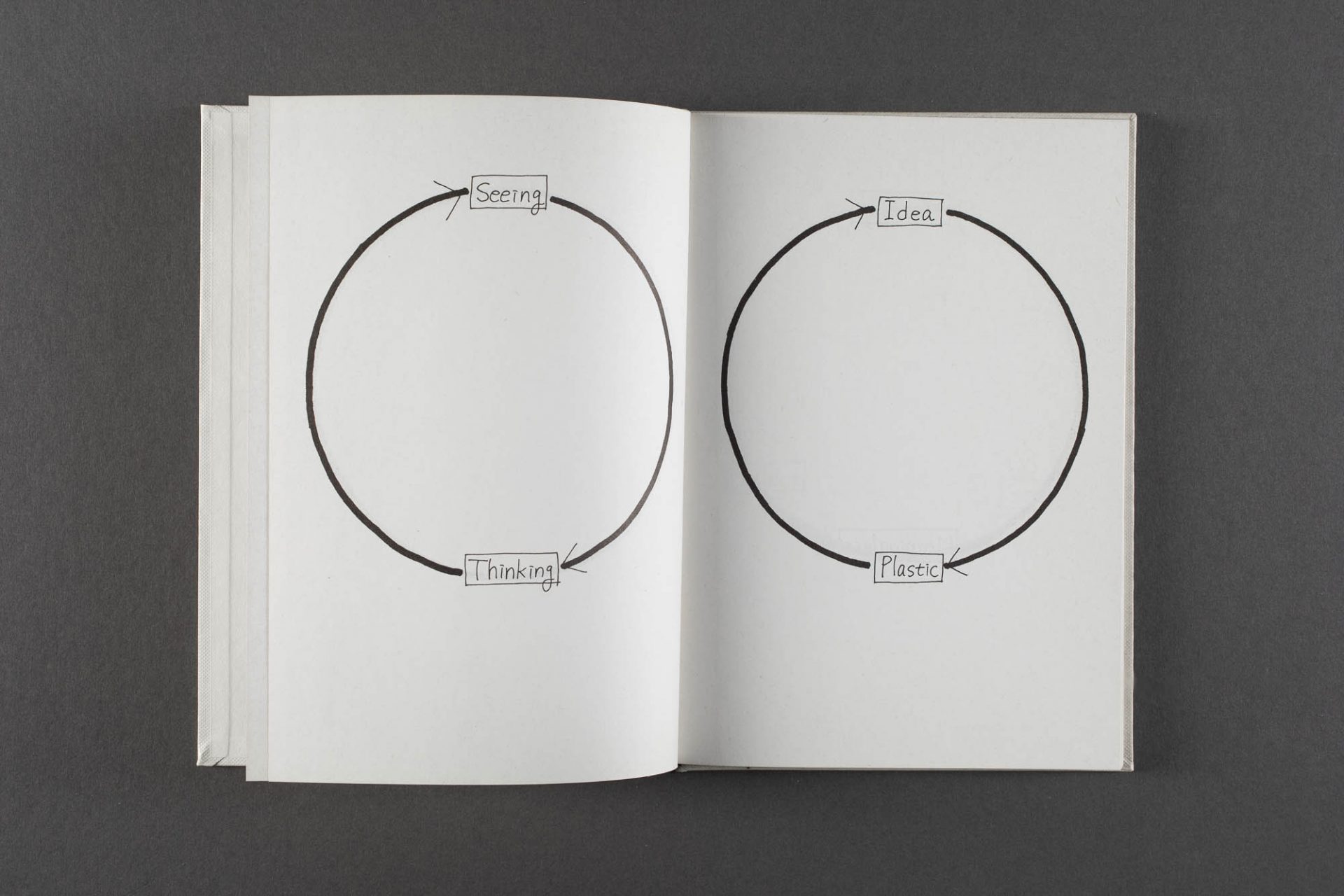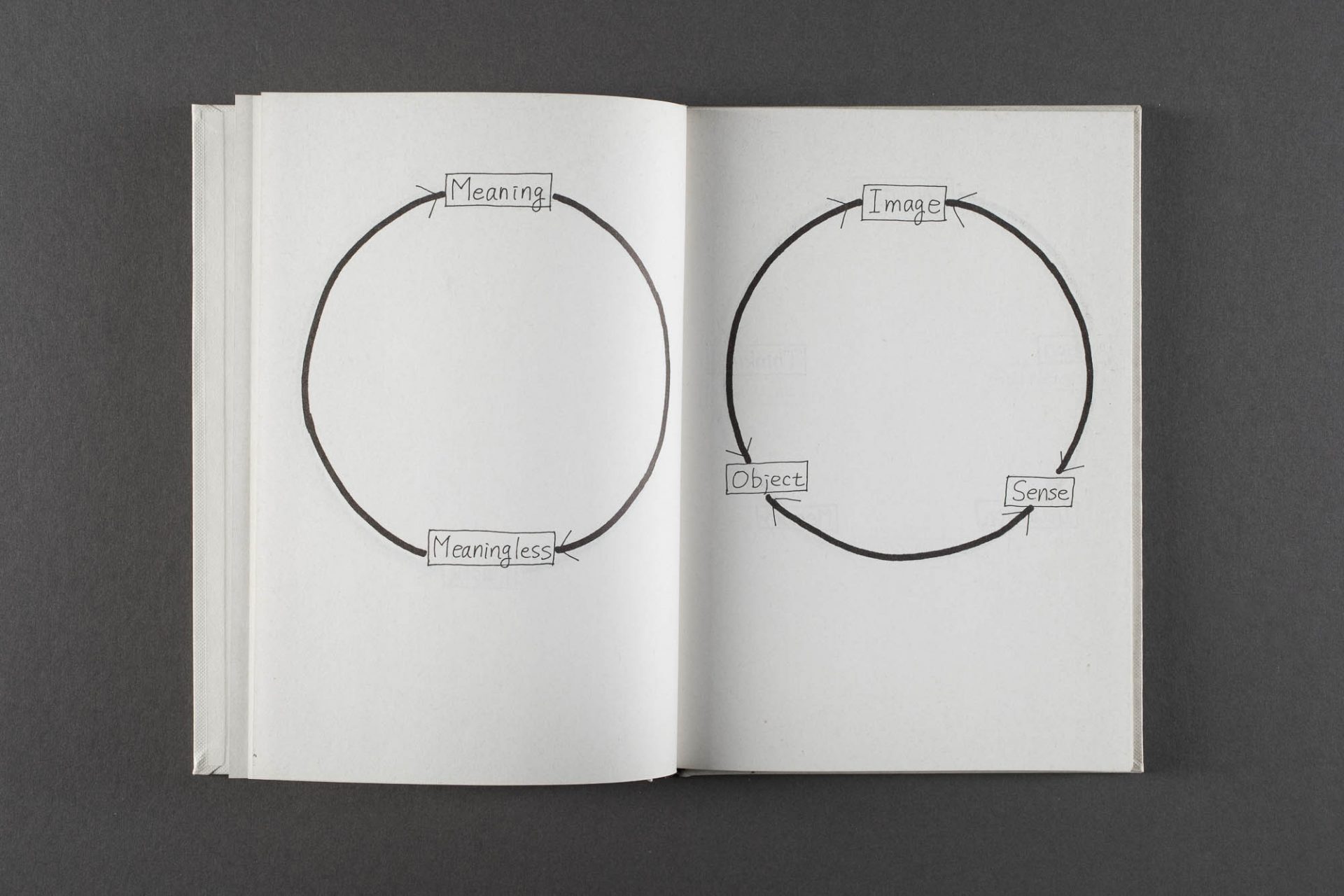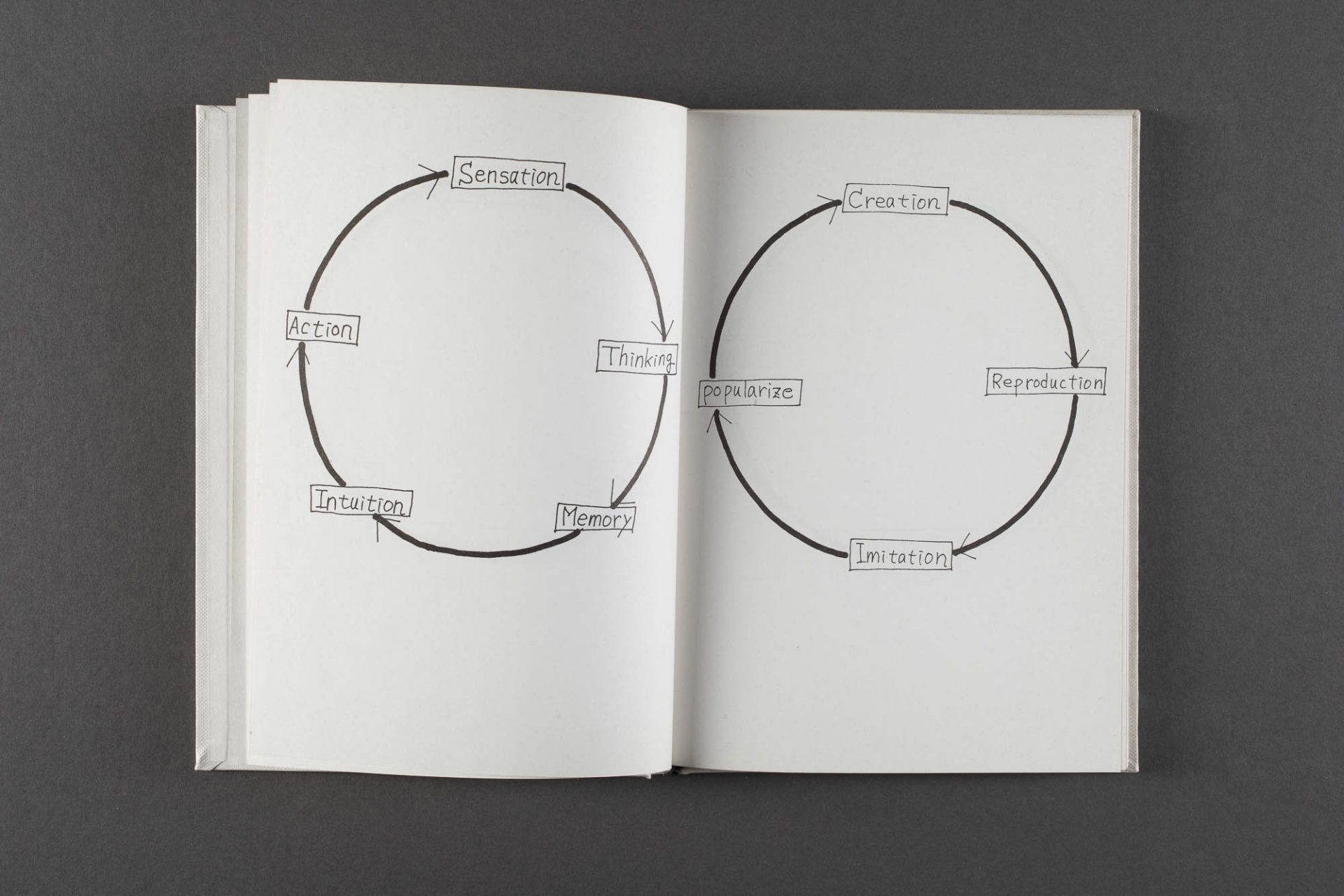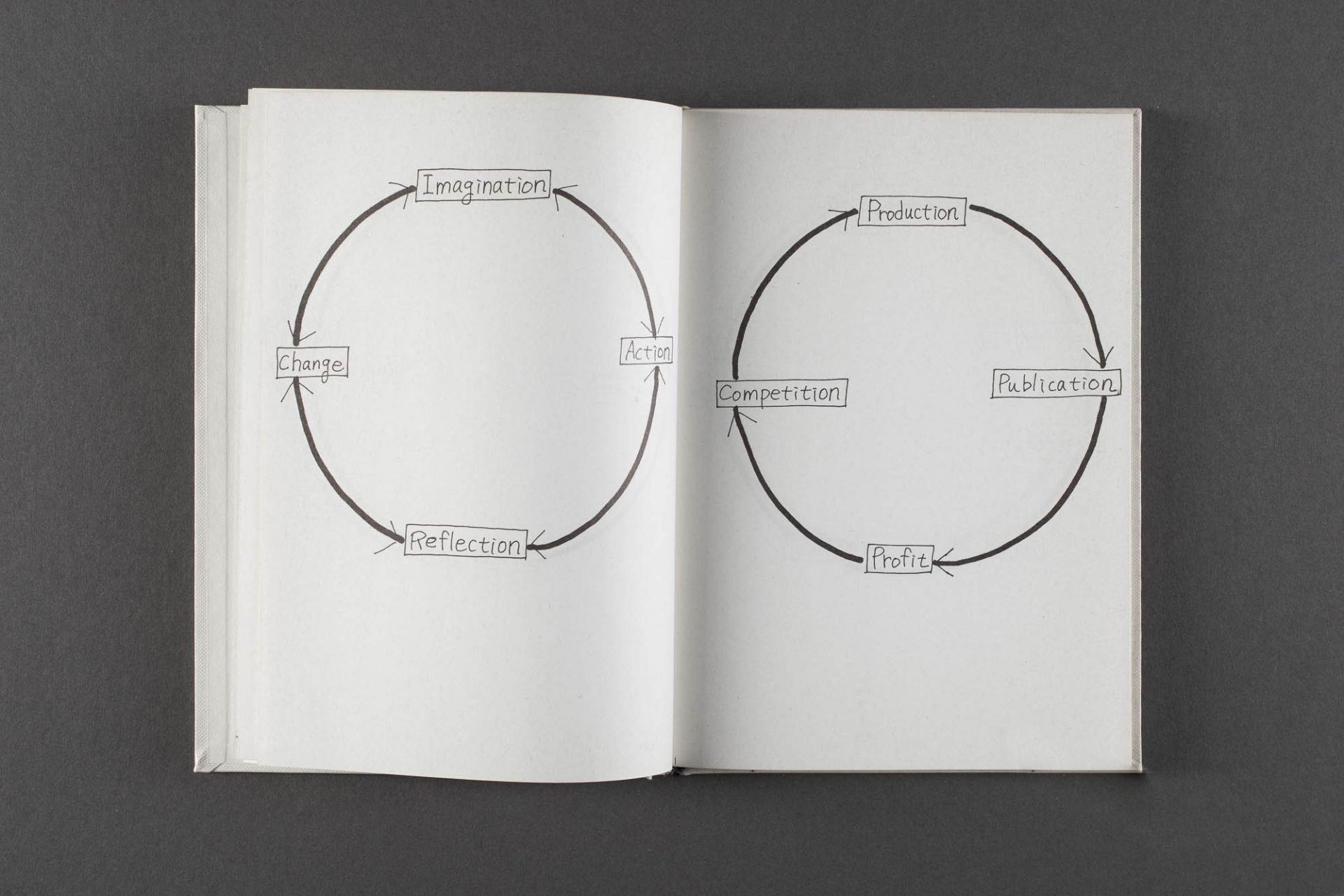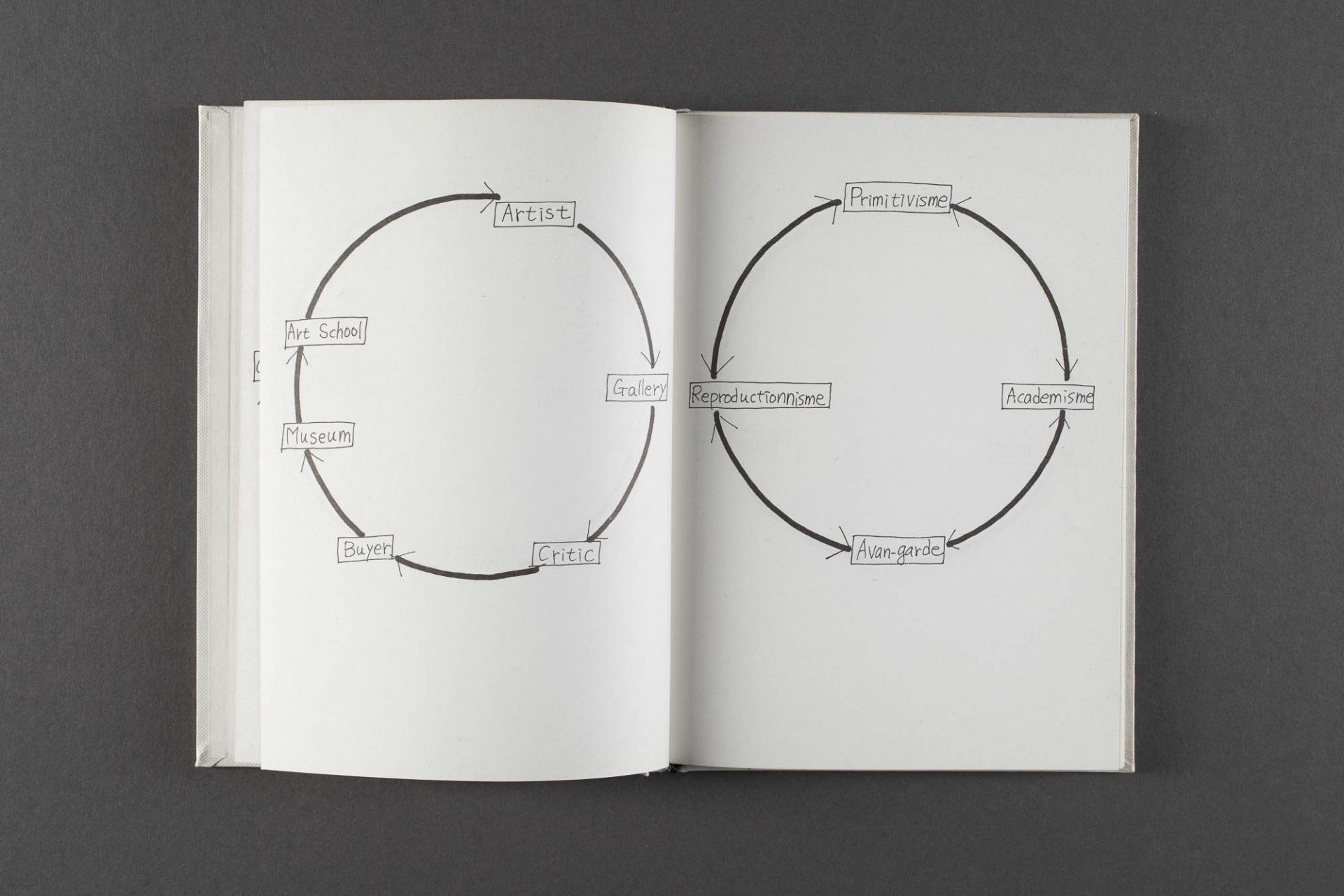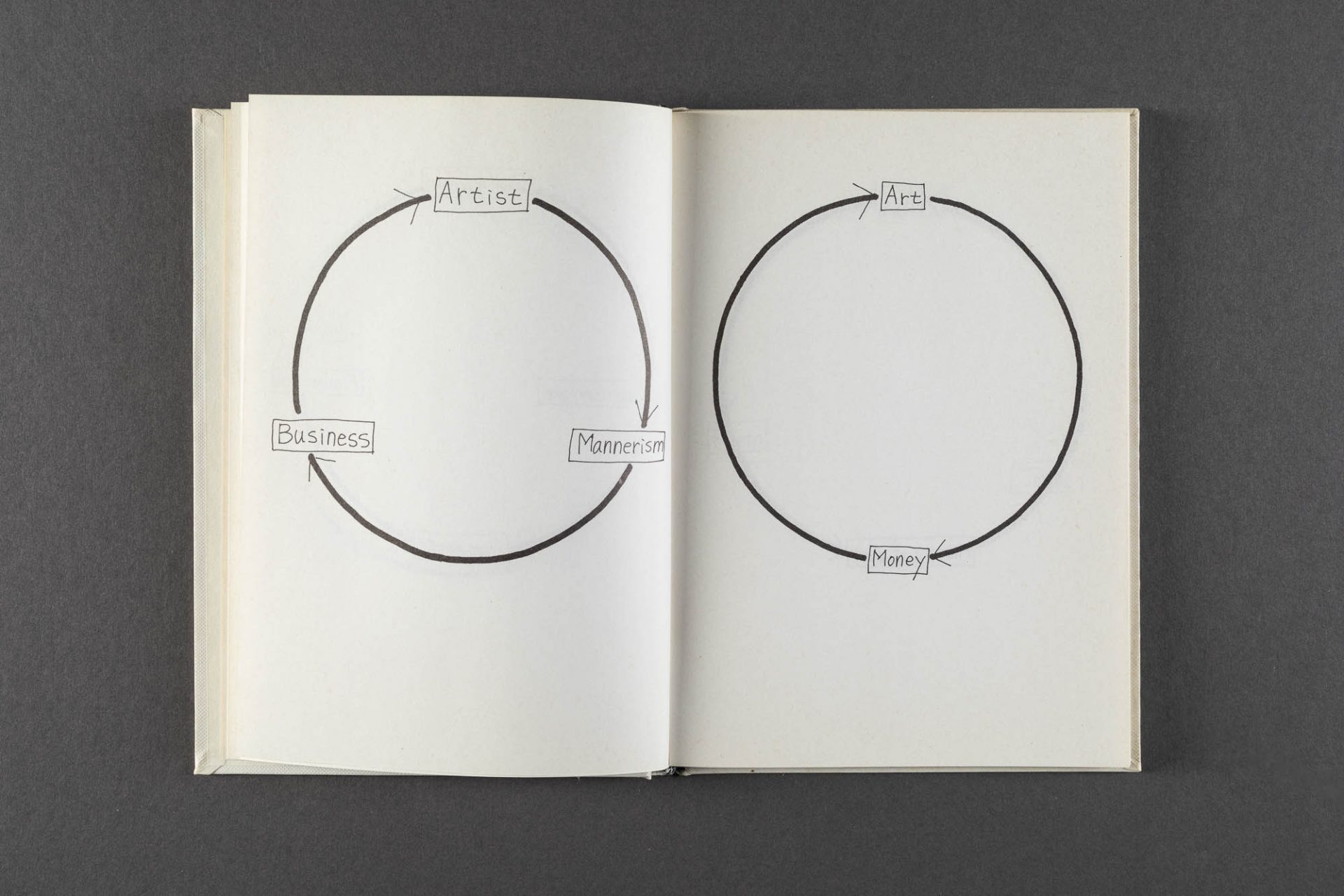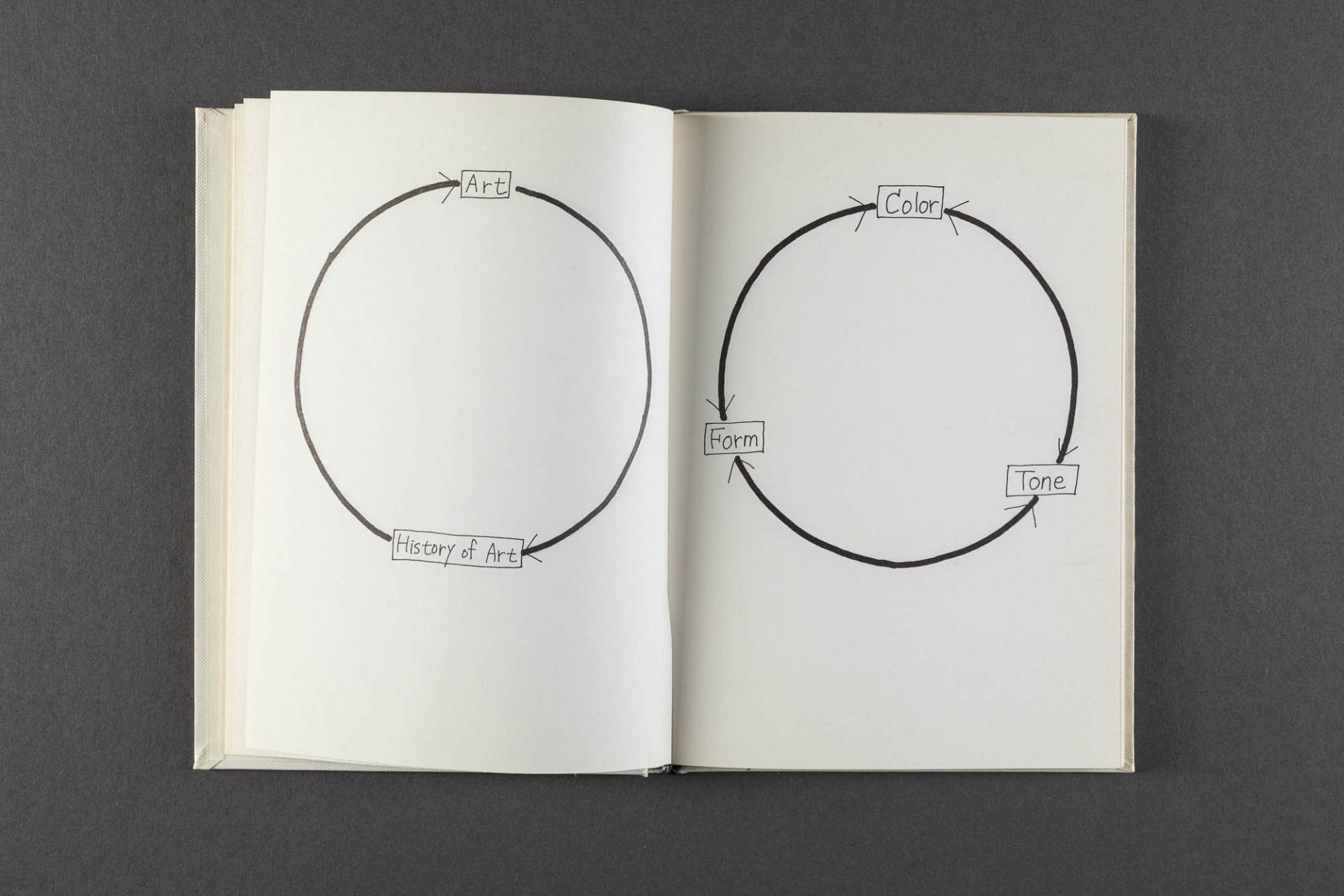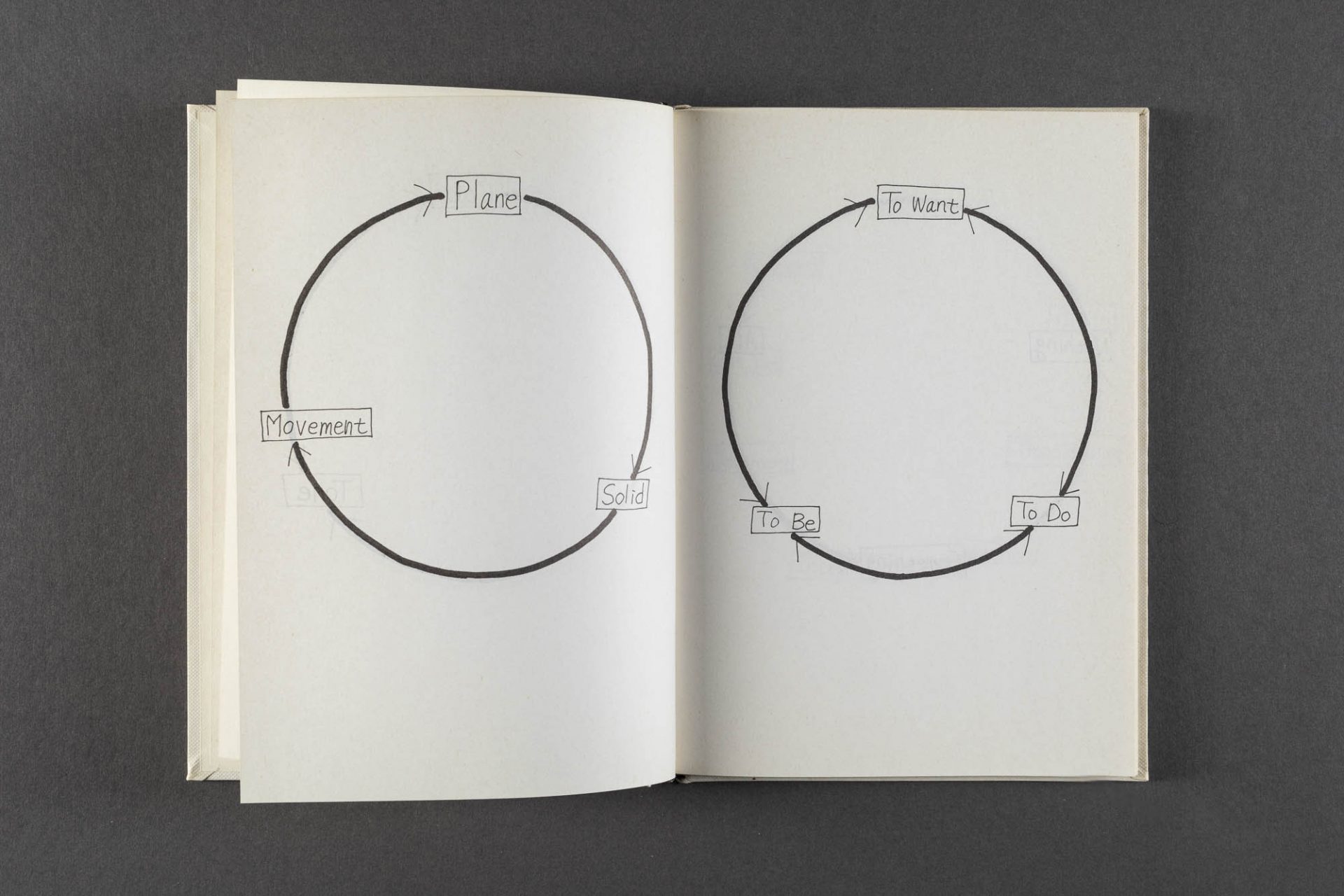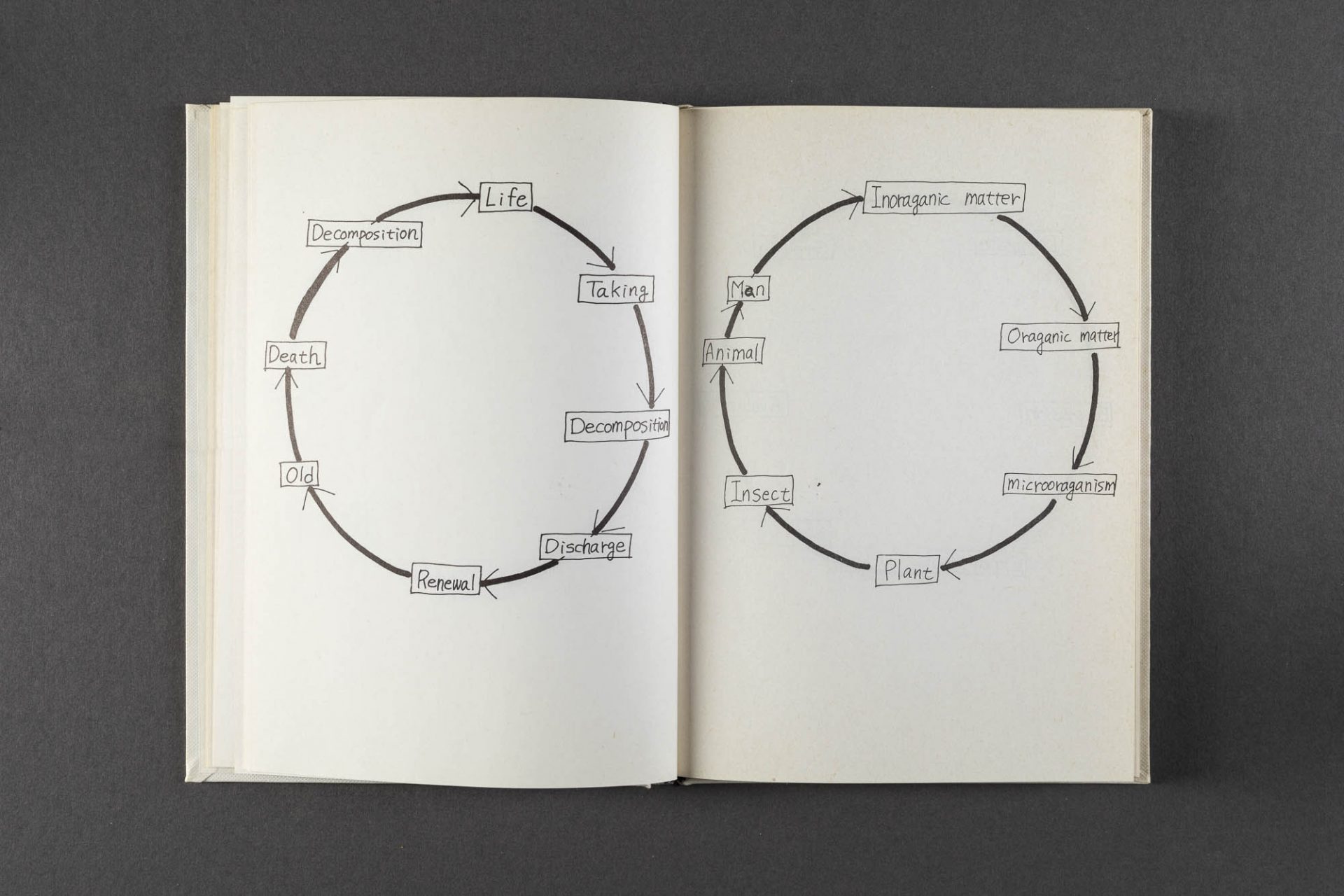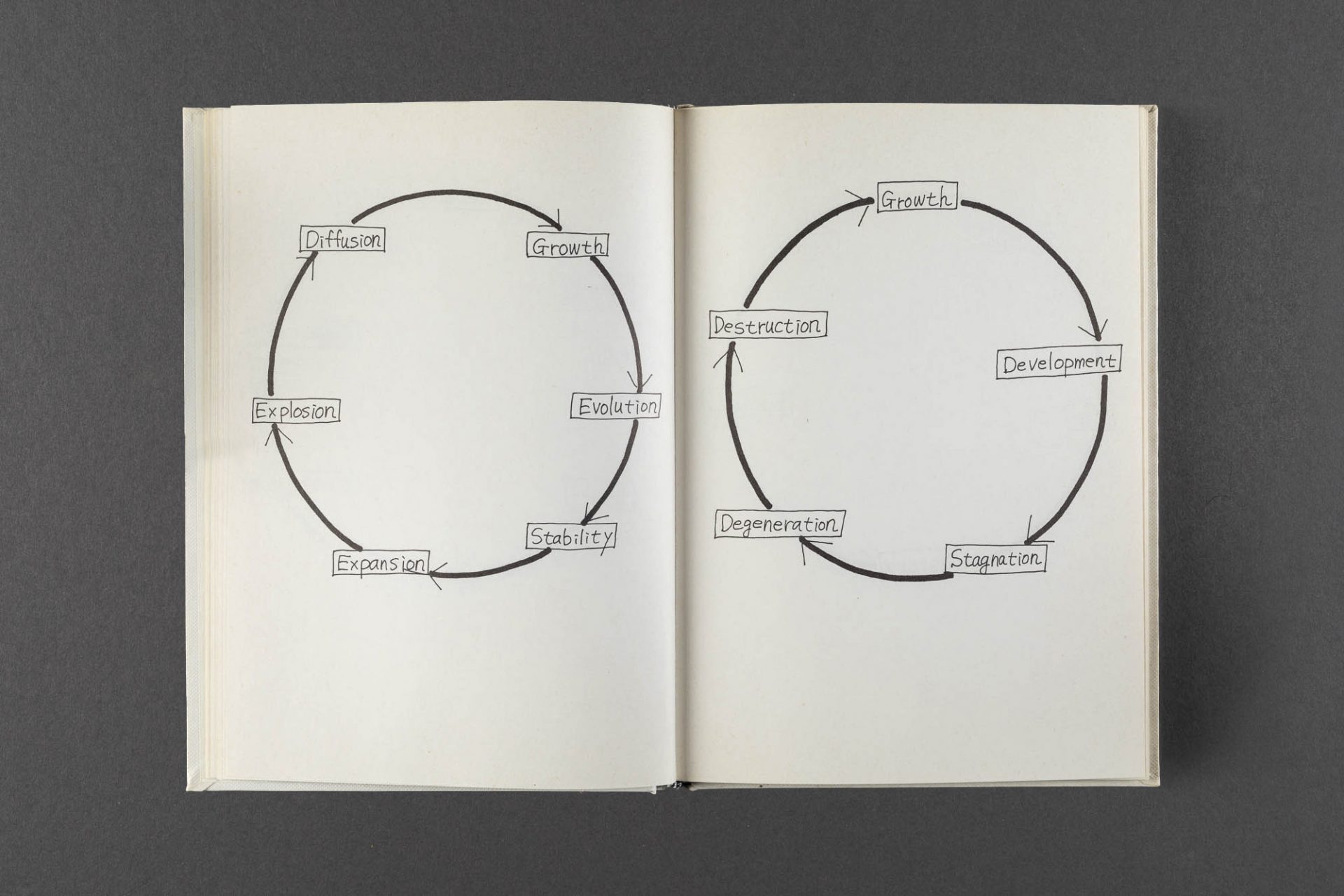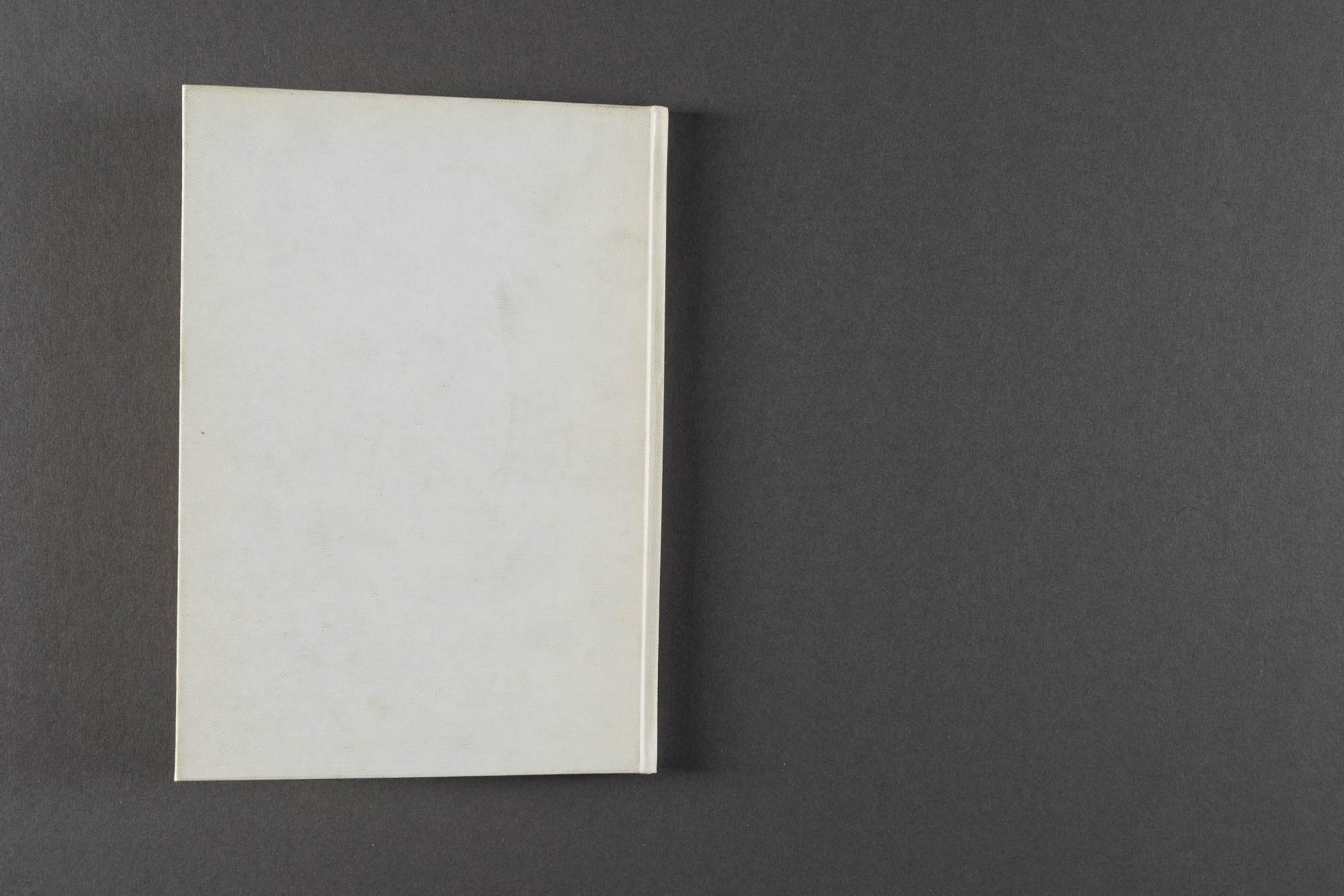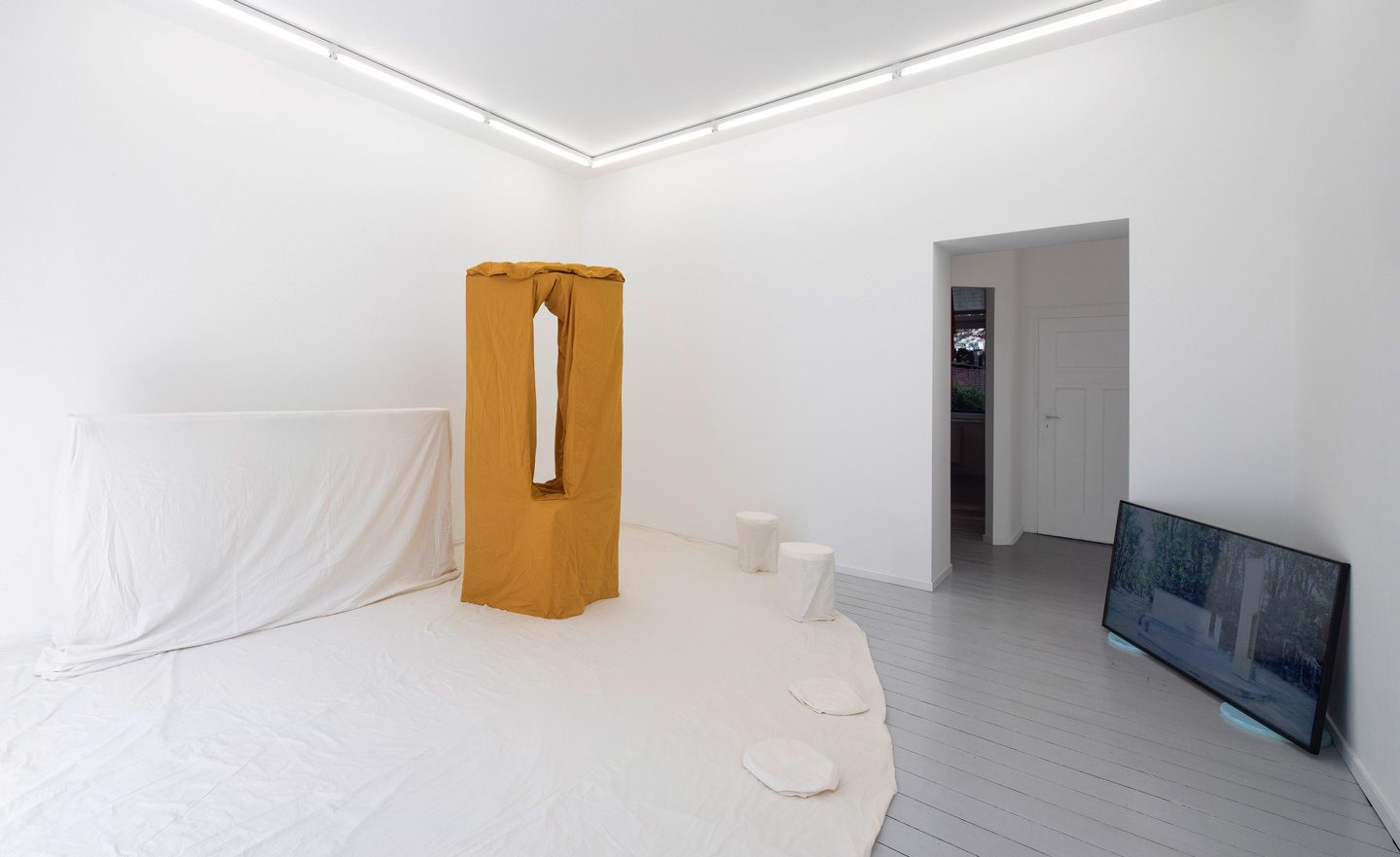Yoshio Shirakawa
Resonances of DiStances kicks off with the exhibition and urban space project by Yoshio Shirakawa.
Shirakawa was born in 1948 in Kitakyushu. He came to Europe in 1970 and studied philosophy and art in Strasbourg, Paris, and Karlsruhe. In 1976 Shirakawa moved to Düsseldorf, where he studied at the Art Academy with Günter Uecker. During this time, he came into contact with Joseph Beuys and his concept of social sculpture. Beuys’ artistic approach had a great influence on Shirakawa’s work from then on. One document of this intense encounter is the interview Shirakawa conducted with Joseph Beuys, which partly appeared in the underground magazine morgue in 1980. Another protagonist in Shirakawa’s artistic development was Alfred Schmela. The generous support by the gallerist made it possible for him to work as an artist in the region. In his encounter with Western culture, Shirakawa began to investigate the flows of the avant-garde movements in his country of origin, Japan.
The exhibition he organized in 1983, “Dada in Japan 1920-1970” at the Kunstmuseum Düsseldorf, was seminal for the curators, awakening their interest in the Japanese avant-garde for further research on it.
In the same year Shirakawa returned to Japan and settled in Gunma Prefecture. Since then, he has focused on local art projects, turning his attention to the people and stories in the region. His activities raise issues in contemporary Japanese society, such as family, community, capitalism, democracy, and war responsibility.
Shirakawa involves the local community and history in his artistic work. The Umaya no Mokuba (Wooden Horse of Umaya) festival he created in his current hometown of Maebashi is a good example of this. Shirakawa invented the fictional story that the traditional Festival of Wooden Horsesoriginated in the form of a prayer in Maebashi to banish cholera and other catastrophes in the early Meiji period. During the procession of handmade wooden horses, the energetic shouts of “Dada” echoes through the streets of Maebashi. Da (駄) means draft horse and Dada (駄々) is used in Japanese for tantrums or children’s whining.
Thus, the story ends with a Swiss businessman who learned of this festival and brought it to Zurich, triggering the birth of Dada. This newly created and annual festival has not only reinvented the legend of Dada’s birth but has also become an official event in which the local citizens have participated with great enthusiasm since 2011. In 2020, the prayer ritual was held under the motto of wanting to banish the Corona pandemic.
Basedonart shows films and materials about the festival.
The first solo exhibition in Germany since the 1980s is dedicated entirely to Shirakawa’s projects with regional references. Bicycles with mounted flags bearing the inscriptions “Ich vergesse nie“ (I never forget) and ” Kraft der Vorstellung” (Power of the Imagination) appear here and there in the city in cooperation with local cyclists and visitors of the exhibition. With this public activity, the voices that have disappeared from the collective memory in the gears of time will be revived and reflected.
It was in 2015 in Nagano when the flags were displayed for the first time in memory of the forced laborers, who worked for the construction of gigantic underground bunker complexes in the last period of the Pacific War. Since then, Shirakawa has developed projects using flags whenever the collective memories face threats of oblivion. For instance, he stood up the flag in response to the Great East Japan earthquake and nuclear disaster in 2011 in the region around Fukushima. In light of the global Covid-19 pandemic, the artist has reprinted this work for the project, Resonances of DiStances.
Following the exhibition and the urban space project in Düsseldorf, the bicycles will have their starting point at Kunstverein Leverkusen for two more months.
“Memorial Monument of Forced Displacement of Koreans in Gunma Prefecture”
In 2014, the Gunma Prefectural Congress decided to remove a monument in the Gunma no Mori park. It was erected in 2004 to commemorate the forced relocation and forced labor of Koreans during the Pacific War. A court case on the matter, brought by the founding initiative of the memorial, followed and has still not been settled to date.
As an artistic response to this attempt to prevent the collective remembrance of the events during the Pacific War, Shirakawa created the “Memorial Monument of Forced Displacement of Koreans in Gunma Prefecture” made of wood and fabric in 2015. The soft and light materials, reminiscent of artworks by Claes Oldenburg or Franz Erhard Walther, give this work a mobile and pliable character despite its size, which is the same as the original monument.
This installation by Yoshio Shirakawa has so far experienced a turbulent history marked by censorship.
In 2017, the work was to be exhibited as part of the “Arts of Gunma” exhibition at the Gunma Prefectural Museum. Under political pressure, Shirakawa’s contribution was withdrawn. Although the work was not shown and was not published in the exhibition catalog, the work received significant media attention. The ensuing public discussion led to this installation being included in the “After Freedom of Expression?” exhibition at the 2019 Aichi Triennale. Three days after the opening of the Triennale, the exhibition was closed responding to a flood of angry threats on social media and physical attacks on the artwork and staff by right-wing groups.
This work by Shirakawa exemplifies the revisionist approach to history and the resulting influence on collective memory.
open
23.04.– 05.06.2021 | Wed–Fri 2–6 pm | Sat 12–4 pm and by appointment (please be aware of current pandemic regulations or just contact us)
The Yoshio Shirakawa exhibition is part of the Resonances of DiStances project:
Interested in updates on our exhibitions & events. Sign up for the boa newsletter
Den Auftakt zu Resonances of DiStances gibt die Ausstellung und das Stadtraumprojekt von Yoshio Shirakawa.
Shirakawa wurde 1948 in Kitakyushu geboren. Er kam 1970 nach Europa und studierte Philosophie und Kunst in Straßburg, Paris und Karlsruhe. 1976 zog Shirakawa nach Düsseldorf, wo er an der Kunstakademie bei Günter Uecker studierte. Während dieser Zeit kam er in Kontakt mit Joseph Beuys und dessen Begriff der sozialen Plastik. Beuys künstlerischer Ansatz sollte von nun an großen Einfluss auf das Werk Shirakawa’s haben. Ein Dokument dieser intensiven Begegnung ist das Interview, das Shirakawa mit Joseph Beuys führte. Dieses wurde 1980 zu Teilen im Underground- Magazine morgue veröffentlicht. Ein weiterer Protagonist für Shirakawas künstlerische Entwicklung war Alfred Schmela. Der Galerist unterstützte den jungen Künstler und ermöglichte es ihm so an zahlreichen Performances und Ausstellungen in der Region mitwirken zu können. In der Auseinandersetzung mit der westlichen Kultur begann Shirakawa die Avantgardeströmungen seines Herkunftslandes Japan zu untersuchen.
Die von ihm im Jahr1983 organisierte Ausstellung “Dada in Japan 1920-1970” im Kunstmuseum Düsseldorf, sollte sich als richtungsweisend für zahlreiche Kurator*innen und ihrer Rezeption und Forschung zur japanischen Avantgarde erweisen.
Im selben Jahr kehrte Shirakawa nach Japan zurück und ließ sich in der Präfektur Gunma nieder. Seitdem konzentriert er sich auf lokale Kunstprojekte und richtet seine Aufmerksamkeit auf die Menschen und Geschichten vor Ort. Seine Aktivitäten werfen Fragen auf, mit denen sich die zeitgenössische japanische Gesellschaft konfrontiert sieht, wie Familie, Gemeinschaft, Kapitalismus, Demokratie und Kriegsverantwortung.
Shirakawas bezieht dazu die lokale Bevölkerung in seine künstlerische Arbeit mit ein. Das von ihm ins Leben gerufenen „Umaya no Mokuba (Hölzernes Pferd von Umaya)“Festival in seiner jetzigen Heimatstadt Maebashi ist dafür ein herausragendes Beispiel. Shirakawa erfand die Legende, dass das traditionelle „Festival der Holzpferde“ in Form eines Gebetes in Maebashi entstanden sei, um die Cholera und andere Katastrophen in der frühen Meiji-Zeit zu bannen. Während des Umzuges mit selbst gebauten Holzpferden hallt der energische Ausruf „Dada“ durch die Straßen von Maebashi. Da (駄) bedeutet Wagenpferd und Dada (駄々) wird im Japanischen für Wutanfälle oder Kindergejammer verwendet. So endet die Legende mit einem Schweizer Geschäftsmann, der vondiesem Festival erfuhr und es mit nach Zürich gebracht hat, um dort die Geburt von Dada auszulösen. Dieses neu geschaffene und jährlich wiederkehrende Fest hat nicht nur die Geschichte von Dadas Geburt neu erfunden, sondern ist auch ein offizielles Event geworden, an dem die Bevölkerung seit 2011 mit großer Begeisterung mitwirkt. 2020 fand das Gebetsritual unter dem Motto statt, die Corona-Pandemie bannen zu wollen. Basedonart zeigt Filme und Materialien zu dem Festival.
Die erste Einzelausstellung in Deutschland seit den 1980er Jahren widmen wir ganz Shirakawa’s Projekten mit regionalen Bezügen. Fahrräder mit montierten Fahnen mit den Aufschriften „Ich vergesse nie“ und „Kraft der Vorstellung“ werden von den Besuchern der Ausstellung durch die Stadt gefahren. Mit dieser Aktion im öffentlichen Raum möchte der Künstler die Stimmen, die im Getriebe der Zeit aus dem kollektiven Gedächtnis verschwunden sind, wieder wachrufen und neu reflektieren.
Im Jahr 2005 zeigte Shirakawa anlässlich einer Ausstellung in Nagano die Flaggen zum ersten Mal. Sie dienten als Erinnerung an die Zwangsarbeiter und deren Ausbeutung bei dem Bau eines gigantischen unterirdischen Bunkers gegen Ende des Pazifikkriegs. In unregelmäßigen Abständen nimmt Shirakawa das Projekt wieder auf, nämlich immer dann, wenn in den Augen des Künstlers das kollektive Vergessen droht, so zum Beispiel als Reaktion auf die große Erdbeben- und Reaktorkatastrophe 2011 in der Region um Fukushima.
Angesichts der globalen Covid-19-Pandemie hat der Künstler diese Arbeit für das Projekt Resonances of DiStances neu aufgelegt.
Im Anschluss an die Ausstellung und das Stadtraumprojekt in Düsseldorf werden die Fahrräder für 2 weitere Monate ihren Startpunkt am Kunstverein Leverkusen haben.
“Memorial Monument of Forced Displacement of Koreans in Gunma Prefecture”,
im Jahr 2014 beschloss der Kongress der Präfektur Gunma ein Denkmal in der Parkanlage Gunma no Mori zu entfernen. Erst 2004 war dieses zum Gedenken an die Zwangsumsiedlung und Zwangsarbeit von Koreanern während des Pazifikkrieges errichtet worden. Ein Gerichtsverfahren zur Sache, angestrengt von der Gründungsinitiative des Memorials, folgte und ist bis heute noch nicht beigelegt.
Als künstlerische Antwort auf diesen Versuch, das kollektive Erinnern an die Ereignisse während des Pazifikkrieges zu verhindern, schuf Shirakawa 2015 das “Memorial Monument of Forced Displacement of Koreans in Gunma Prefecture” aus Holz und Stoff. Die weichen und leichten Materialien, die an Kunstwerke von Claes Oldenburg oder Franz Erhard Walther erinnern, verleihen diesem Werk trotz seiner Größe, welche der des ursprünglichen Denkmals entspricht, einen mobilen und nachgiebigen Charakter.
Diese Installation von Yoshio Shirakawa erfuhr bisher eine wechselvolle und von Zensur geprägte Geschichte.
2017 sollte die Arbeit im Rahmen der Ausstellung “Arts of Gunma” im Präfekturmuseum Gunma ausgestellt werden. Auf politischen Druck hin wurde der Beitrag von Shirakawa zurückgezogen. Obwohl das Werk nicht gezeigt und im Ausstellungskatalog nicht publiziert wurde, erfuhr die Arbeit große mediale Aufmerksamkeit. Die sich anschließende öffentliche Diskussion führte dazu, dass diese Installation in die Ausstellung “After Freedom of Expression?“ der Aichi Triennale 2019 aufgenommen wurde. Drei Tage nach der Eröffnung der Triennale musste die Ausstellung aufgrund einer Flut von wütenden Drohungen in den sozialen Medien und physischen Angriffen auf die Kunstwerke und das Personal von rechten Gruppierungen, geschlossen werden
Exemplarisch zeigt diese Installation von Shirakawa den revisionistischen Umgang mit Geschichte und die daraus folgende Einflussnahme auf das kollektive Gedächtnis.
Download Artist information
Shirakawa was born in 1948 in Kitakyushu. He came to Europe in 1970 and studied philosophy and art in Strasbourg, Paris and Karlsruhe. In 1976 Shirakawa moved to Düsseldorf, where he studied at the Art Academy with Günter Uecker.
